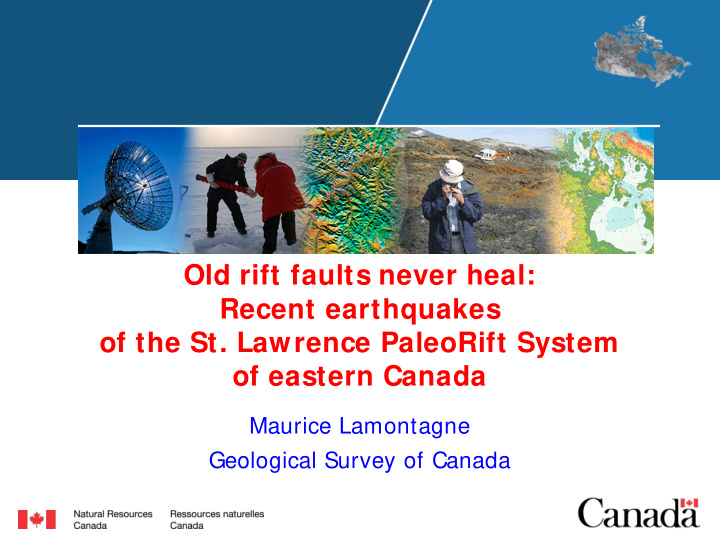



Old rift faults never heal: Recent earthquakes of the St. Lawrence PaleoRift System of eastern Canada Maurice Lamontagne Geological Survey of Canada
Today’s presentation 1. Yes, we have earthquakes in Eastern Canada! 2. Most earthquakes occur in areas affected by rifting 3. In these areas, some correlation exists between mapped faults and earthquakes 4. Conclusions
10% in 50 years Giardini et al., 2003
Earthquakescanada.ca
1929: M 7.2 Grand Banks eq and tsunami Earthquakescanada.ca
Earthquakescanada.ca
Earthquakes All large ones since 1608 All M3+ since 1980 Quebec City Montreal Ottawa Toronto
Lower St. Lawrence M 5.9 Western Quebec Charlevoix 5 M 6-7 M 6.2 M 5.8
Faults were formed during creation of Iapetus Ocean (end of PreCambrian) Source: Planète Terre / P.-A. Bourque, U. Laval
Taconic Orogeny (Ordovician) Appalachians Canadian St. Lawrence Shield Platform Source: Planète Terre / P.-A. Bourque, U. Laval
Canadian Shield Quebec City Appalachians Montreal
Seismic profile across the St. Lawrence Valley Canadian Shield Appalachians
Charlevoix
Radar + elevation Quebec City
Charlevoix
1925 Appalachians Ridge- Push
Western Quebec M 6.2 M 5.8
Seismic Hazard: Historical Seismicity Robuste + Rift Faults Québec Montreal Ottawa Toronto Increasing Hazard Sa(0.2) Earthquakescanada.ca
Work in progress Nadeau, Brouillette, Lamontagne Western Quebec Seismic Zone Other sources of data such as magnetics, gravity, bathymetry and Lidar (for Charlevoix)
Detection of lineaments
Conclusions 1. Most earthquakes in Quebec occur within boundaries of the SLRS 2. Most M> 5+ earthquakes correlate well with known faults 3. For smaller earthquakes, other faults may be reactivated 4. Local stress enhancement or weak faults? 5. There is on-going mapping of the SLRS faults… stay tuned
Recommend
More recommend